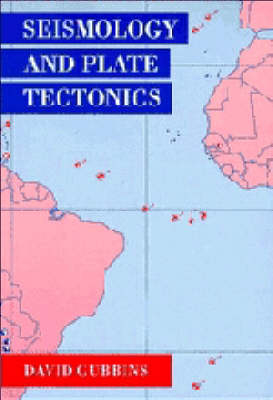
Seismology and Plate Tectonics
Seiten
1990
Cambridge University Press (Verlag)
978-0-521-37995-3 (ISBN)
Cambridge University Press (Verlag)
978-0-521-37995-3 (ISBN)
This textbook forms the basis for an introductory course in seismology for physicists, mathematicians and geologists. It is unique in giving an introduction to seismological theory and the principles of plate tectonics, as well as developing a practical approach to the reading and interpretation of seismograms.
This textbook is unique in giving an introduction to seismological theory and the principles of plate tectonics, as well as developing a practical approach to the reading and interpretation of seismograms. The book forms the basis for an introductory course to physicists, mathematicians and geologists. The early chapters give a general background in geophysics and elasticity theory, and present the standard results for the propagation of seismic waves radiated from large earthquakes. The main part of the text describes how seismograms are read and interpreted, explaining how the readings are used to locate the source of the waves, determine the sense of motion across the fault and to work out details of plate movements. Examples are included in which the reader has the opportunity to interpret seismic records and use them to find locations of earthquakes and determine their source mechanisms. The final chapter discusses plate tectonic theory, and gives the mathematical foundation behind the description of plate movement in terms of vectors.
This textbook is unique in giving an introduction to seismological theory and the principles of plate tectonics, as well as developing a practical approach to the reading and interpretation of seismograms. The book forms the basis for an introductory course to physicists, mathematicians and geologists. The early chapters give a general background in geophysics and elasticity theory, and present the standard results for the propagation of seismic waves radiated from large earthquakes. The main part of the text describes how seismograms are read and interpreted, explaining how the readings are used to locate the source of the waves, determine the sense of motion across the fault and to work out details of plate movements. Examples are included in which the reader has the opportunity to interpret seismic records and use them to find locations of earthquakes and determine their source mechanisms. The final chapter discusses plate tectonic theory, and gives the mathematical foundation behind the description of plate movement in terms of vectors.
1. Introduction; 2. Mechanisms of elastic media; 3. Elastic waves in simple media; 4. Earth structure and earthquake location; 5. Free oscillations; 6. The seismic source; 7. Plate tectonic theory; Appendix; Bibliography; References; Index.
| Erscheint lt. Verlag | 28.6.1990 |
|---|---|
| Zusatzinfo | 8 Tables, unspecified; 150 Line drawings, unspecified |
| Verlagsort | Cambridge |
| Sprache | englisch |
| Maße | 192 x 237 mm |
| Gewicht | 615 g |
| Themenwelt | Naturwissenschaften ► Geowissenschaften ► Geophysik |
| ISBN-10 | 0-521-37995-4 / 0521379954 |
| ISBN-13 | 978-0-521-37995-3 / 9780521379953 |
| Zustand | Neuware |
| Haben Sie eine Frage zum Produkt? |
Mehr entdecken
aus dem Bereich
aus dem Bereich
How Numerical Models Revealed the Secrets of Climate Change
Buch | Hardcover (2020)
Princeton University Press (Verlag)
CHF 59,95


